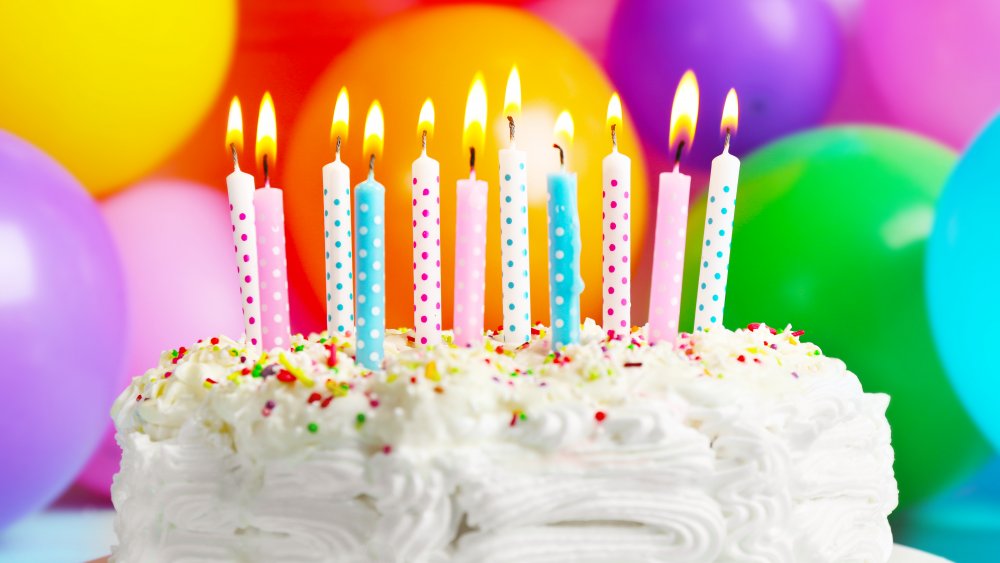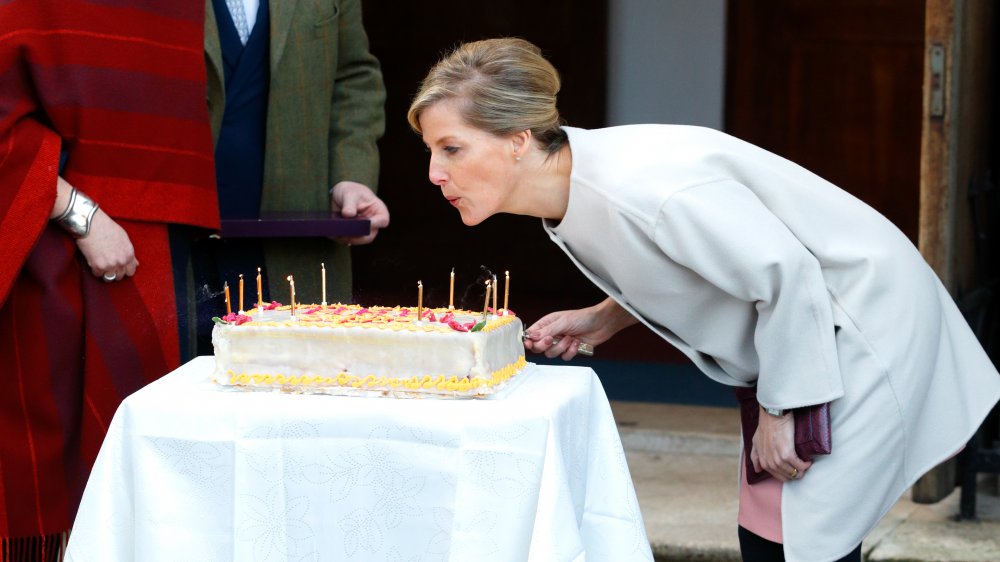Cake Shields Could Be The Next Big Party Trend. Here's Why
If your birthday happens to fall sometime between now and the end of the year, we have breaking news for you. Chances are, you won't be getting a party, you won't have a cake, and there will be no birthday candles to blow out unless an inventive Florida-based dentist has his way.
Billy Kay, who is also a grandfather of four, has spent about three decades thinking about the spit that lands on a cake when people blow out their birthday candles (via Today). And in April, he put his thoughts into FDA-approved recycled polystyrene and devised a cake shield that comes in a range of sizes to suit the cake: quarter-sheet, round (up to 10 inches), and single slice. The shields come with a flat base and a cover with sides that come together and snap to seal the cake inside. The shields, which retail later this month, are expected to cost $4.99 for the single-slice model and $14.99 for the larger-sized shields.
Kay said that the pandemic changed people's perceptions about safety, and it was now unlikely that someone would consider eating a cake that someone else has blown on. According to him, blowing out candles is "[a] tradition is engrained in cultures throughout the world and needs to be upheld," and his invention would "help keep this tradition alive."
Concerns over birthday party candles predate the pandemic
Kay isn't the first person to point out the yuck factor that he sees when anyone blows out birthday candles. Paul Dawson, professor of food safety at Clemson University, actually put together a research paper on the subject, which was published in the Journal of Food Research and titled "Bacterial Transfer Associated with Blowing Out Candles on a Birthday Cake." The results surprised him.
In some cases, blowing out candles saw the number of bacteria on a cake increase by 14 times while in another instance, the amount grew by more than 120 times. "Some people blow on the cake and they don't transfer any bacteria. Whereas you have one or two people who really for whatever reason ... transfer a lot of bacteria," Dawson told The Atlantic in 2017. At the time, Dawson dismissed the risk involved in blowing out birthday candles, saying, "It's not a big health concern in my perspective. In reality, if you did this 100,000 times, then the chance of getting sick would probably be very minimal." Atlantic contributor Sarah Zhang suggested a cake shield might look ludicrous.
The idea of a cake shield is sound
But that was then, this is now. Pediatrician and infectious diseases expert Zehra Aygen is onboard with the idea of a cake shield, saying: "As long as it seals so it's not touching the cake ... and there's nothing open and the candle is going on top of the plastic, it will be OK." At least in theory – when Aygen made those comments, she hadn't actually tested the shield herself.
There's another way to make sure that candle blowing and the cake shield will work, though, and Aygen said that means taking the celebrations outdoors: "They should not [blow out candles] indoors, anyway, because blowing is just going to go everywhere. If they really want, they can blow it out on their own piece of cake and do it outside. Or just skip the candle." She added, "Always, blowing is going to make any germ travel further. So if everyone's around the table, even if it's just the cake in front of the kid, blowing is going to spread it around."
So if you really want to play it safe, you may want to use both cake shields and social distancing when it's time to blow out the candles on a cake.


